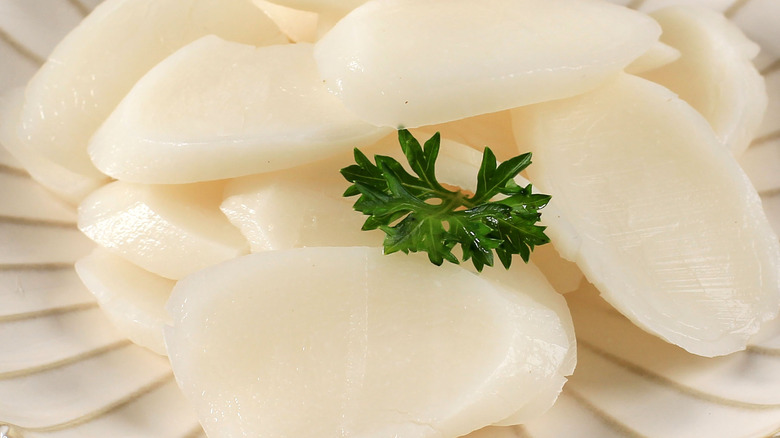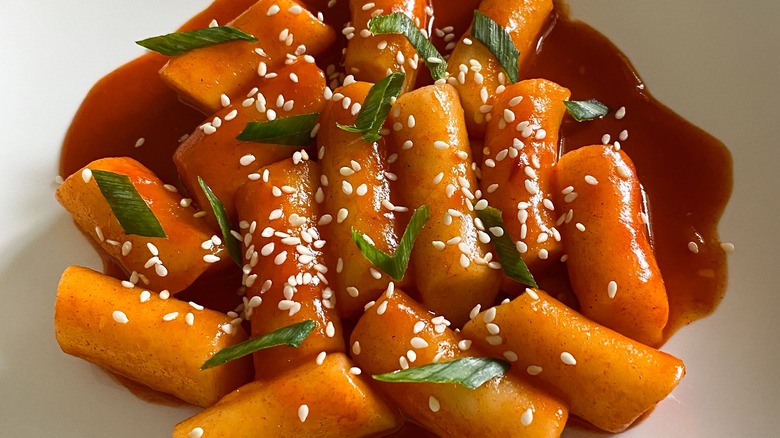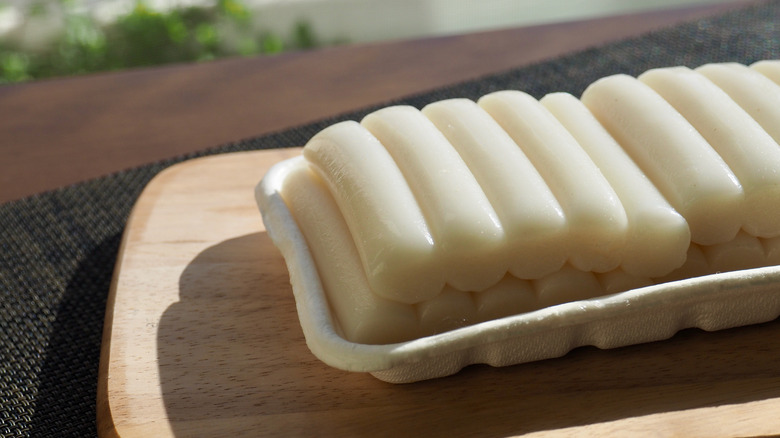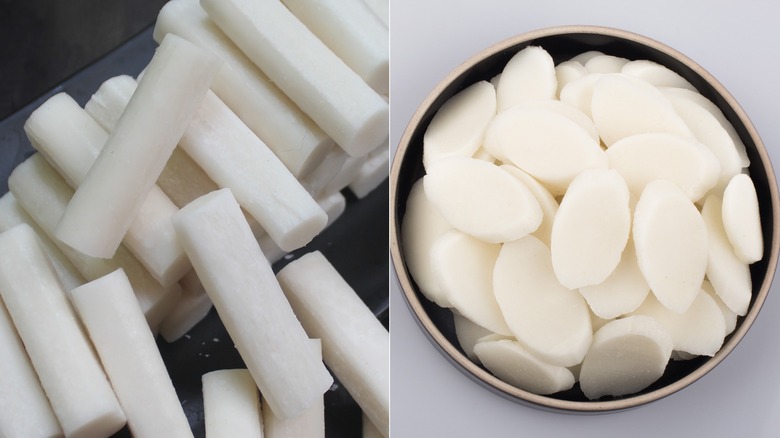What Are Tteok And How Do You Cook Them?
Rice is, without a doubt, Asia's favorite grain. In 2017, The Economist reported that an estimated 90% of rice consumed around the world is eaten in Asia, with most of that consumption seen in China, India, and Indonesia — three of the region's most populous countries.
But it would be a mistake to think that rice is consumed just one way — boiled and then eaten fluffed up — the way most of us might consume plain rice. It can be steamed, turned into congee, made into crackers, or made into sweet or savory cakes, which is where this ubiquitous Korean ingredient comes into the picture.
Tteok, which can come in flat ovals or shaped like solid Italian penne, are a common type of Korean rice cake, made by pounding rice into a flour, steaming the mix, and then rolling it out. Korean cooking sites like My Korean Kitchen and Maangchi say tteok can be made by hand, although modern manufacturing methods have made it easy to buy this rice cake and store it for a rainy day.
As the director of the Institute of Traditional Korean Food Yoon Sook-ja put it to Korea JoongAng Daily: "Tteok is the next best food after kimchi to represent Korea. Tteok is made from the most nutritious ingredients, such as glutinous rice, beans, nuts, vegetables, fruit and even herbal ingredients used in Chinese medicine."
Tteok has a long, rich history
The Korea JoonAng Daily says that while rice has been grown in Korea since 3500 BC, it was not considered as something to be consumed until after 1500 BC but tteok didn't appear in any ancient texts until about 500 BC. And even then, tteok appeared to be made the same way; the publication says: "One account describes rice being washed, then pounded into a powder and then mixed with water before being shaped into cakes to be steamed ... tteok at this time was often mixed with flowers to provide natural color and herbs to convey a medicinal effect."
Tteok wasn't always as widely enjoyed as it is today. It began as a food for the wealthy, and didn't trickle down to most households until rice itself became a staple in Korean homes. Today, tteok doesn't just come in traditionally-shaped cylinders — they come in oval shaped bites, too. Bon Appétit says tteok can also come looking like little, ready-to-eat cocoons.
Tteok can be made at home
While tteok can easily be purchased today, the traditional rice cakes can also be made at home. To do that, you'll need short-grain rice flour, which can either be purchased or made at home using a method My Korean Kitchen outlines as washing short-grain rice and then soaking it for 12 hours, drying it, and then grinding it down. The flour is then added to starch, water, and salt. The mix is then steamed before the dough is pounded and kneaded until it becomes chewy and elastic. It is then rolled out into cylinders before it is cut. Fresh tteok is best eaten the day it is made, although it can be frozen for up to a month.
While it might be tempting to substitute tteok for mochi and vice versa, they aren't exactly interchangeable, since mochi is made with glutinous rice flour, while tteok can be made with sushi rice.
Tteok needs to be soaked before it is cooked
If you're reviving your tteok from frozen, chef Susan Kim tells Bon Appétit that the journey to a good tteok meal begins by giving the icy Korean rice cakes a good soaking; and that rehydration is a step that cannot be skipped. She explains, "After you soak it, it doesn't appear any different, it just looks like it's still submerged in water. But soaking tteok before using it does make a difference in terms of overall consistency and chewiness all the way to the core," adding that soaking the tteok "[o]vernight if you can, half a day — even just an hour will make a difference."
After the rice cakes have been soaked, they can be pat-dried and then used as an ingredient for a recipe of your choice. Serving tteok with something flavorful on the side is critical because they are quite bland and need an external flavor boost. Kim has been known to fry up tteok, and serve them with Halloumi kicked up with Korean gochujang sauce.
But tteok isn't always prepared in a way that might make a Korean grandmother's head turn. It can be used in the traditional Korean way, that is, popped into a soup or used as part of a savory stir-fry. New York chef Jennifer Kim also shared with Bon Appétit that tteok comes in handy when you want to make anything that might be rice- or pasta-based. She recommends viewing tteok as being similar to an Italian gnocchi, and treating it as such.



